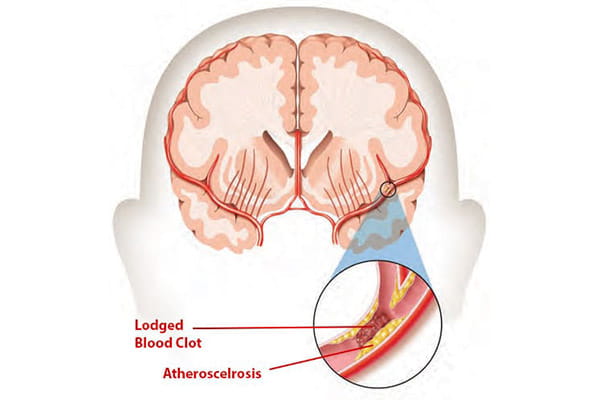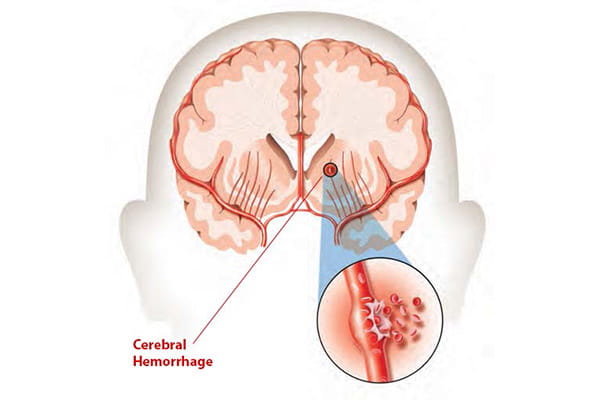What is a Stroke?
Stroke is an event that affects the arteries of the brain. A stroke occurs when a blood vessel bringing blood to the brain gets blocked or ruptures (bursts).
This means that the area of the brain the blocked or ruptured blood vessel supplies can’t get the oxygen and nutrients it needs. Without oxygen, nerve cells can’t function.
Your brain controls your ability to move, feel, think and behave. Brain injury from a stroke may affect any of these functions. Several factors affect the ways people experience a stroke. They include:
- The location of the blood vessel that is affected
- The area and extent of the brain injury
- The type of stroke (ischemic vs. hemorrhagic)
Ischemic Stroke

Ischemic stroke occurs when a clot blocks a vessel supplying blood to the brain. The artery becomes narrowed or clogged, cutting off blood flow to brain cells. Ischemic strokes are the most common type of stroke.
Hemorrhagic Stroke

Hemorrhagic stroke happens when a blood vessel bursts (ruptures) in the brain. This type of stroke may affect large arteries in the brain or the small blood vessels deep within the brain. The rupture keeps the surrounding areas of the brain from getting needed oxygen. Hemorrhagic strokes are less common than ischemic strokes.
Transient ischemic attacks (TIAs)
Transient ischemic attacks (TIAs) are often called “warning strokes.” TIAs produce symptoms just like stroke, but typically last a shorter amount of time. They don’t usually cause lasting damage. But they are major predictors of future stroke. If you suspect you’ve had or are having a TIA, don’t ignore it! Call 9-1-1. Get immediate medical attention, even if the symptoms go away.